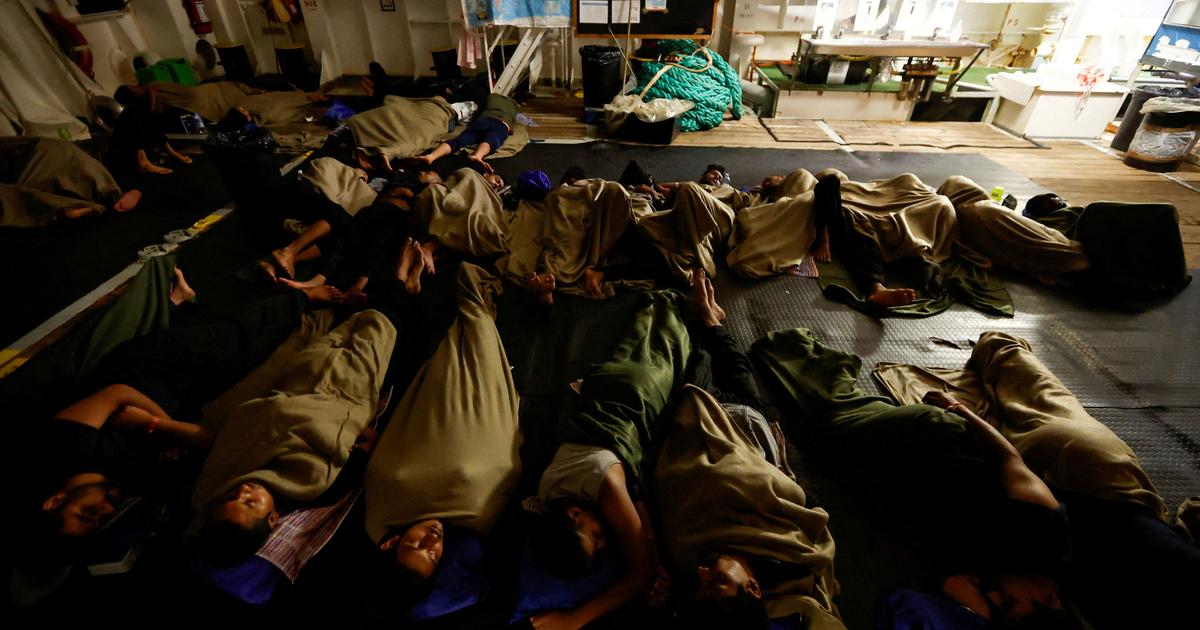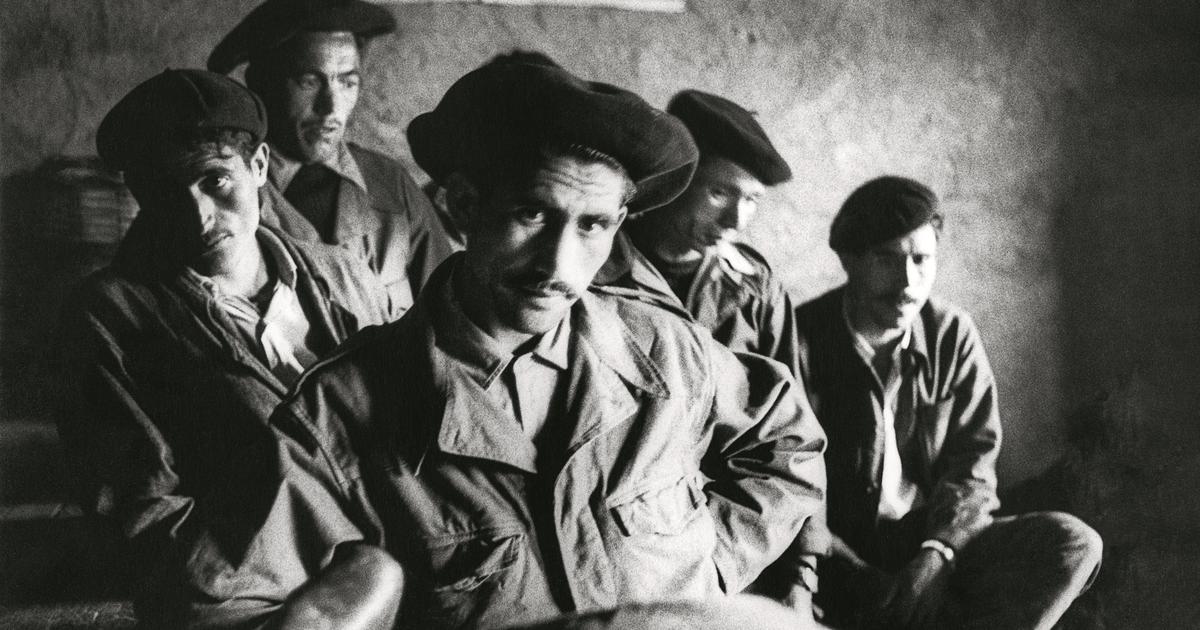The EU and Turkey reached an agreement in 2016 in view of migration to Europe.
In 2021, the situation of the refugees around Izmir is precarious, as Merkur.de learns.
Izmir - The war in Syria has been going on for ten years.
The EU-Turkey Agreement has been in existence for five years.
1833 days.
So much time has passed since then.
In view of the refugee movement in 2015, the European Union agreed a deal in 2016 that should curb the number of refugees on the route via Turkey to Greece - and thus to the EU.
But the reality looks bad, as
Merkur.de
* learns from the region around Turkish Izmir.
The EU-Turkey agreement has been in place for five years - the “LandsAid” project supplies 700 families around Izmir
Ten years.
Five years of the EU-Turkey deal.
1833 days.
There are people behind the numbers.
People like those whom the German sea rescuer Claus-Peter Reisch, former skipper of the rescue ship Lifeline, encounters around the Turkish metropolis of Izmir.
Thousands live there in unofficial camps scattered across the rural area.
700 families are in charge of the "LandsAid" project, with which Reisch traveled to Turkey.
It helps these families survive.
With food packages, hygiene and baby items.
In times of the corona pandemic, also with masks.
According to "LandsAid" there are around 150,000 to 200,000 migrants in the region around Izmir: inside, half of them in illegal camps.
The majority of them are from Syria, explains Reisch.
According to him, it is mainly women, children and old people who live in precarious conditions in the makeshift camps - without government help, without money, without work, mostly without running water.
While he
is talking
to
Merkur.de *
, Reisch is standing at the port of Izmir, as he says.
It is warm, people are already wearing spring-like clothing, he reports.
Due to the pandemic, everyone had a mask on, including children who were on bicycles.
He has withdrawn in order to be able to telephone in peace.
To describe what is hard to believe even for him as an experienced sea rescuer.
He speaks of “misery camps”, small camps that are mostly made of plastic sheeting.
"I think I can say I've seen a lot, but what I had to see touched me very emotionally," says Reisch.
He had already shared photos of the conditions on Twitter before the phone call.
One shows an old woman in the middle of one of the camps, surrounded by children and young women, leaning on a stick.
+
Mainly women, children and old people live in the camps in Turkey.
© Claus-Peter Reisch
“LandsAid” supports Syrian refugees in the region around Izmir - people live in precarious camps
Ten years.
Five years of the EU-Turkey deal.
1833 days.
“The refugees find a landowner who lets them camp on his property.
If they are lucky, he will put a water tank in front of them and fill it up.
Then you're in luck.
Everything else is up to you.
They then dig a hole as a toilet.
When it rains, the camps sink into mud.
People don't have sensible shoes.
It's shocking, "says Reisch, describing his impressions:" People literally live in the dirt.
These smaller camps are scattered all over the country.
The aim of "LandsAid" is to keep the refugees from making the life-threatening journey to Europe, in addition to providing supplies.
A difficult undertaking, given the desperation and the catastrophic conditions in the camps.
“People get into unsuitable boats in the hope that it will be better in Greece *,” says the 60-year-old.
Despite the risk of capsizing and drowning on the way there.
One of the tasks of the aid project is therefore to educate people about it.
“If you make sure that people are doing reasonably well, that there is no pressure to move elsewhere, then fewer will set out on their way.” He reports what the helpers said, shaken on the spot: Von a family of five who had overseen the project for a year.
And who nevertheless sat in one of the boats.
There were no survivors.
"The isolationist policy, which was introduced as a result of the EU-Turkey declaration, had devastating consequences for the refugees who are looking for security and protection in Europe," reports the humanitarian aid organization "International Rescue Committee" (IRC).
+
According to the "LandsAid" aid project, 80 percent of the refugees who live around Izmir come from Syria.
© Claus-Peter Reisch
Syrian refugees on their way to Europe - Thousands live in unofficial camps around Izmir
The Moria refugee camp on the Greek island of Lesbos became a symbol of the migration movement to Europe.
When the camp caught fire last year, the global community's attention was drawn to the conditions on site.
For a while.
At the EU summit on March 25th, the EU-Turkey agreement is on the agenda.
As
reported by
Deutsche Welle
, the financial aid program for refugees in Turkey has already been extended for another year.
The situation of migrants: inside Turkey, less people are aware than the slum camps on the Greek islands.
Everyone knows the name Moria, but not the small, fragmented camps around Izmir.
"A few kilometers further the need is at least as great, but nobody knows about it," says Claus-Peter Reisch.
What is the perspective of these people?
“The perspective is that you have to see that people stay alive through food.
That they can survive. ”Ten years.
Five years of the EU-Turkey deal.
1833 days.
The EU-Turkey deal
Turkey is supposed to take back people who have fled to Greece without the right to asylum and control the borders more closely in order to prevent migrants from fleeing to Europe.
In return, the member states of the EU are accepting the same number of refugee Syrians from the camps in Turkey.
In return, the refugees living in Turkey are to be supported with six billion euros from Brussels.
A basic idea was to prevent people from the dangerous journey across the Mediterranean and to provide better care for those with asylum claims.
In reality, the Greek island of Lesbos turned into the outer fortress wall of Europe, where people sometimes wait years for their asylum decision - or to be sent back to Turkey.
The number of people who have fled to the European Union via the Eastern Mediterranean has actually decreased since then.
According to the UN Refugee Commissioner, around 857,000 refugees arrived in 2015, compared to just under 60,000 in 2019.
According to UN refugee aid (as of 2019), over 3.6 million Syrian refugees live in Turkey * itself.
The EU countries took in almost 29,000 people in total during this time - significantly fewer than agreed in the EU-Turkey deal.
The corona crisis exacerbated the situation of the refugees.
Turkey refused to take back the refugees, the EU stopped admission.
The European Union has been accepting Syrians again since August 2020.
The agreement increasingly developed into a means of political pressure from Turkey on the EU, which last year, for example, temporarily declared the border with Greece to be open.
(aka) * Merkur.de is an offer from Ippen.Media.
List of rubric lists: © Claus-Peter Reisch















